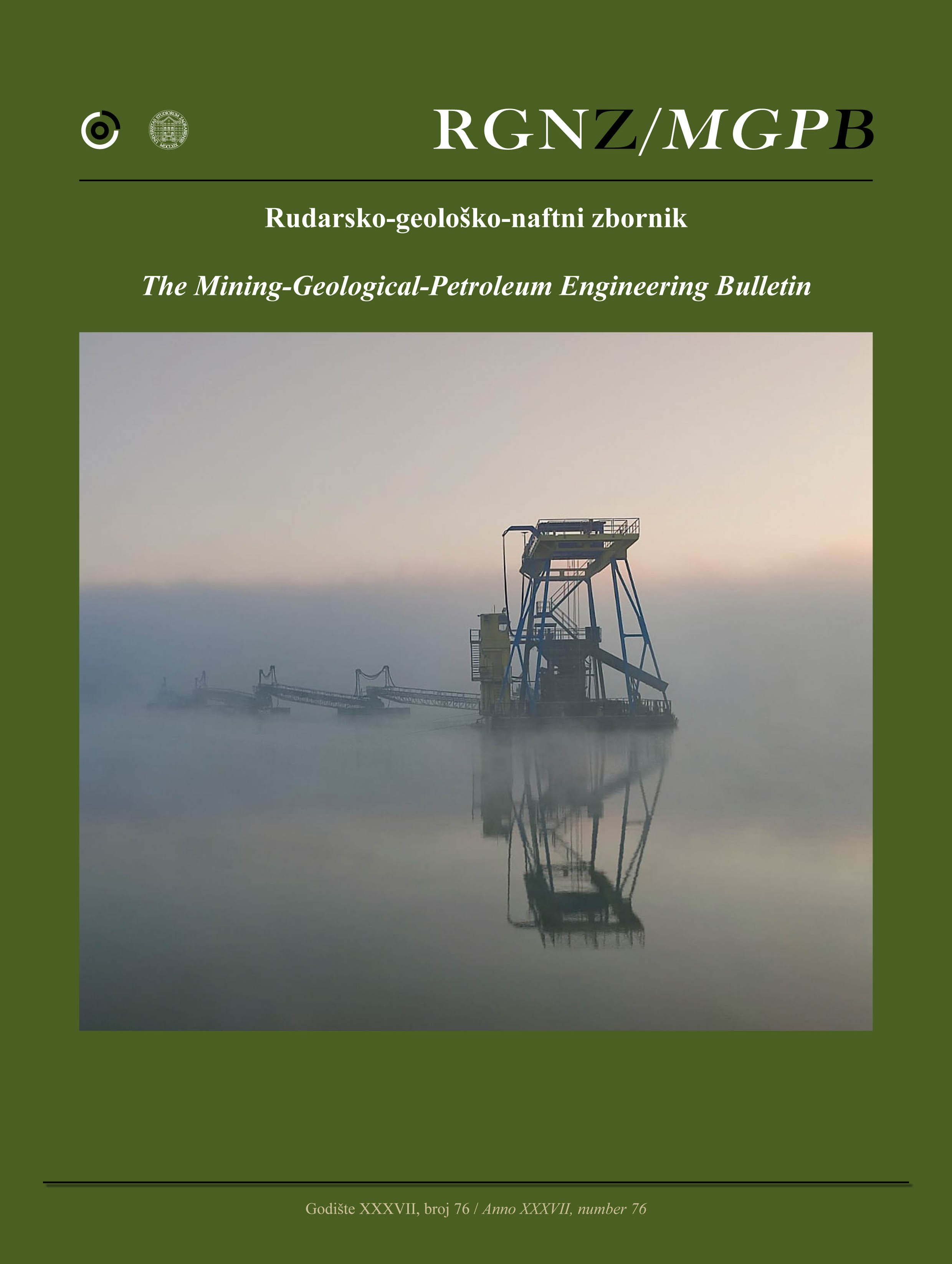Integrating ANN Prediction with Honeybee Optimisation for Flyrock Minimisation in Open-Pit Mining
DOI:
https://doi.org/10.17794/rgn.2025.5.11Keywords:
Flyrock prediction, Optimisation algorithm, Blasting pattern, Honeybee algorithm, Metaheuristic algorithmsAbstract
Flyrock is an undesirable phenomenon resulting from blasting in open-pit mines, posing significant risks to both environmental and human safety. Given these risks, a comprehensive study of flyrock is essential to mitigate its adverse effects. This study presents a novel hybrid intelligent model designed to predict and minimize flyrock distance by integrating an Artificial Neural Network (ANN) with a Honeybee Optimization Algorithm. Utilizing a dataset of 334 blast records collected from the Sungun copper mine, various ANN models were developed and evaluated. After assessing multiple models through a formal scoring system, the most effective one was selected for optimization. The chosen ANN model demonstrated strong predictive performance, achieving coefficients of determination (R²) of 0.8930 and 0.8874, as well as root mean square error (RMSE) values of 0.2486 and 0.2512 for the training and testing phases, respectively, outperforming conventional empirical models. To further refine the blast pattern for safety, the Honeybee Optimization Algorithm was employed to minimize the predicted flyrock distance. The optimal flyrock distance was determined to be 7.25 meters, reflecting a 27.5% reduction compared to the lowest observed value in the collected data. This demonstrates the superiority of the proposed hybrid approach in enhancing blasting safety and efficiency.
Downloads
Published
Issue
Section
License
Copyright (c) 2025 Mojtaba Rezakhah, Erfan Nemati, Amir Batarbiat, Manoj Khandelwal

This work is licensed under a Creative Commons Attribution 4.0 International License.
Creative Commons-BY
Authors who publish with this journal agree to the following terms:
In agreeing this form, you certify that:
- You read the ethical codex of the RGN zbornik available at journal web.
- You submitted work is your original work, and has not previously been published and does not include any form of plagiarism.
- You own copyright in the submitted work, and are therefore permitted to assign the licence to publish to RGN zbornik.
- Your submitted work contains no violation of any existing copyright or other third party right or any material of an obscene, libellous or otherwise unlawful nature.
- You have obtained permission for and acknowledged the source of any illustrations, diagrams or other material included in the work of which you are not the copyright owner.
- You have taken due care to ensure the accuracy of the work, and that, to the best of your knowledge, there are no false statements made within it.
- All co-authors of this submitted work are aware of, and in agreement with, the terms of this licence and that the submitted manuscript has been approved by these authors.
Publication licence
You retain copyright in your submitted work, according to journal license policy (CC-BY). By signing this form you agree that RGN zbornik may publish it under the publication licence. In summary the licence allows the following:
Anyone is free:
- To copy, distribute, display, and perform the work.
- To make derivative works.
Under the following conditions:
- The original author must always be given credit.
- The work may not be used for commercial purposes.
- If the work is altered, transformed, or built upon, the resulting work may only be distributed under a licence identical to this one.
Exceptions to the licence
In addition to publishing the work printed under the above licence, RGN zbornik will also enable the work to be visible online.
The journal editorial can change the licence rules anytime but it cannot retroactively restrict author(s) rights.


